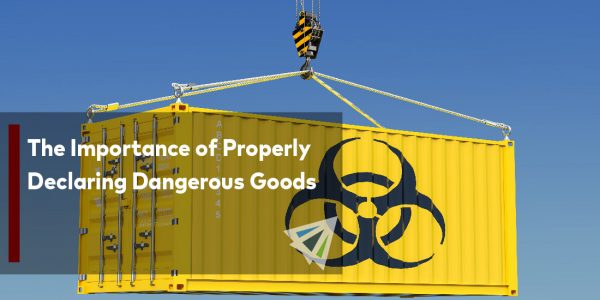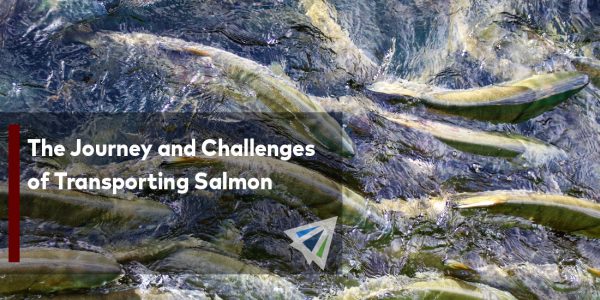Competitive Edge
October 4th, 2023
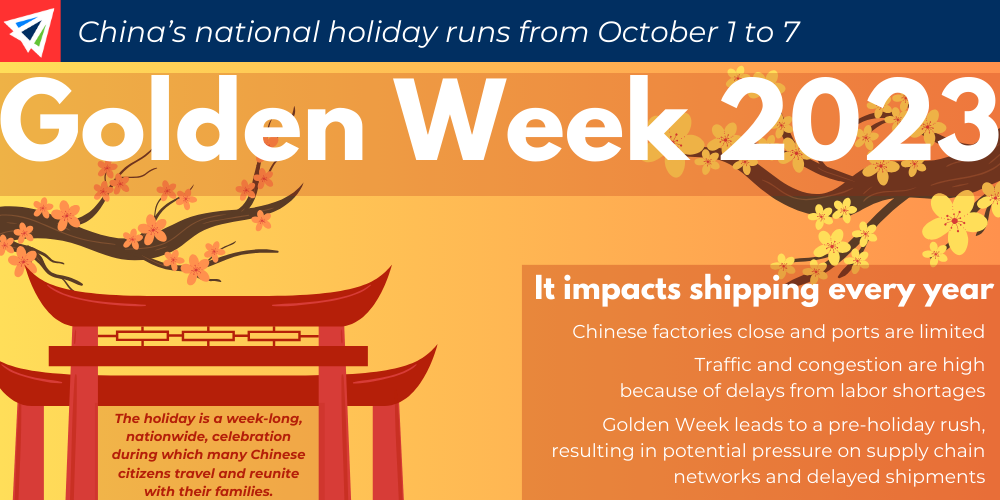
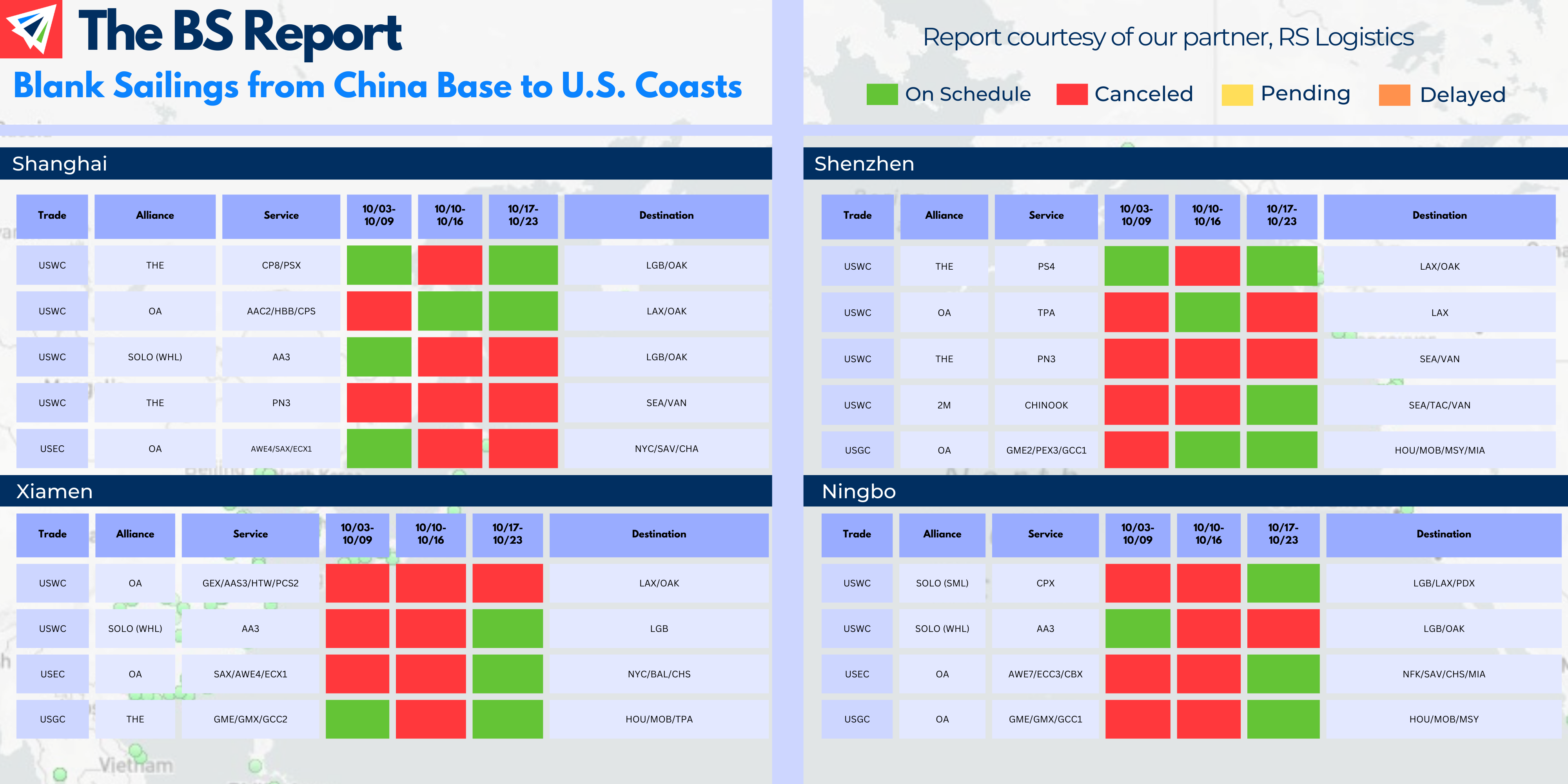
IMPORT: Asia to North America (TPEB)
Recent Developments:
- China’s Golden Week holiday is underway and will conclude on Saturday. Unlike previous years, there hasn’t been a significant pre-holiday surge in bookings.
- Both East and West coast ports recorded 20 percent (plus) year-over-year declines in transpacific imports for the first eight months of 2023.
Rates: Rates are steady, but above pre-pandemic levels and average contracts.
Space: Space is generally open, but certain services have seen tightening.
Capacity: Carriers remain reducing capacity with blank sailings.
Equipment: A new chassis pool at Southeast ports (excluding Charleston) is now live. This recent iteration includes new penalties for unregistered parties who use equipment.
TIPS:
- Hold your logistics partners accountable for frequent updates regarding blank sailings, rate increases, or any other forms of carrier maintenance.
- Establish a firm timeline for future import activity.
IMPORT: Europe to North America (TAWB)
Rates: Rates mirror pre-pandemic levels.
Space: Space is open, except for a few pockets.
Capacity: Major carriers are reallocating TAWB vessel capacity to the Asia-Europe trade.
Equipment: Availability on both origin and destination sides, unless advised otherwise.
TIPS:
- Book at least three weeks prior to the ready date.
- It’s unclear yet how carriers will react to this trade’s softened state, but be on the lookout for certain tactics, like blank sailings or rate increases, from them as a means to reduce their lossmaking.
EXPORT: North America to Asia
Recent Developments:
- Increased competition from other exporting countries, like Brazil, have made it more difficult for American farmers to reach overseas markets.
- The U.S. harvest season could see adverse impacts as low water levels on the Mississippi River hinder barge movement, a popular mode for agriculture exports.
Rates: Rates have increased at a sharp clip.
Capacity: Schedule reliability is currently erratic.
Equipment: Availability at virtually all inland points and seaports. However, chassis access remains a wildcard against fluid intermodal movement.
TIPS:
- Insufficient communication with erratic sailing schedules can lead to higher detention and demurrage fees as well as higher trucking and storage costs. Ensure your logistics partners are not keeping you and your cargo in the dark.
Watch Our September Webinar!
Topics: U.S. – Vietnam trade relations, loan interest rates, and the future outlook/buying patterns.
Sign Up For Our October Webinar!
Our next webinar is on Wednesday, October 18th, at 10am CST!
We will be announcing topics shortly, so keep an eye out for those.
What is Coffee & Cargo? Every month, our experts sit down to discuss what’s currently happening in the shipping industry. Every so often we are joined by special guests, who share their specific expertise and experiences.
Freight News
What Does the Current Outlook Look Like for U.S. Exporters?
The outlook for U.S. importers has continued to remain normal like it was before the pandemic, the same cannot be said for U.S. exporters.
What have been some of the differences?
For one, sailing schedules have been more irregular than before the pandemic, Peter Friedmann, Executive Director of the Agriculture Transportation Coalition said in an interview with Freightwaves.
As well as ocean carrier communications with exporters not being up to par.
Import rates have fluctuated and gone back to pre-pandemic rates. While those same indexes aren’t showing the same for export rates, as of yet – per data from Xeneta.
“Export volumes and revenues are not their primary concerns when making that determination. And as import volumes have dropped, carriers have adjusted – and are still adjusting. The erratic schedules remain an issue and the question is how long it will last,” Friedmann explained on carrier service strategy, in the interview.
Mississippi River Water Levels Continue to Dip, Impacts on U.S. Crop Exports
Last year, low water levels on the Mississippi River have continued this summer, proving to be the same level as last year when the river experienced low water levels.
This is a vital channel that funnels barges of grain and soybeans from the crop belt in Midwest into the Gulf Coast ports.
Now, barge operators are running lighter loads in order to offset for the lack of water.
Additionally, according to U.S. Department of Agriculture data, shipping costs for barges throughout the river increased in September, especially in Memphis, Tennessee.
When transport costs increases, it makes crops in the U.S. more expensive than shipping out of other countries, such as Brazil.
Water levels in Memphis dropped to 10.51 feet below base levels, per the National Weather Service – marking the lowest they’ve been since last year, per AJOT.
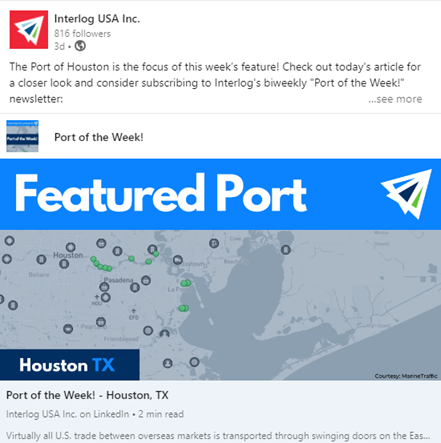
Last Week's Port Poll Winner: Port Houston
Every other week we post a poll on our LinkedIn page (give us a follow if you feel inclined 😊 ), where you can vote on which port you would like to see featured in our deep dive this Friday!
Last Friday, the winner was Port Houston in Texas. Click the link below to read the entire excerpt.
Consider subscribing to our biweekly “Port of the Week!” newsletter to continue getting a closer look at various ports (and inland ports), globally and domestically.
Did You Know: NWSA's Cargo Volumes in August
Year-over-year international container volumes in August at the Northwest Seaport Alliance (NWSA) saw a 22 percent dip.
But amidst that year-over-year decrease, those volumes at the port in August (2023) saw an increase from July this year, totaling 162,273.
A Podcast by InterlogUSA: NEW FreightFM Episode
Check out episode 12: “Golden Week Nuggets, plus Transpacific Market Update”
InterlogUSA’s Rachel Thielen and Emily Smith discuss Golden Week and Mid-Autumn Festival holidays over in Asia, plus a market update on the transpacific trade lane!
FreightFM features short-form video interviews with InterlogUSA’s industry experts offering insights into breaking news, market trends, our company’s history, and more!
Interlog  Insights
Insights
Last week we recapped our September insights, you can check those out here.
This Friday we will unveil our first week of October insights, make sure you’re signed up to receive those.
Sign up for our
industry answers
Our team works to provide valuable, unique, and relevant content to assist you in finding solutions. Sign up now.
